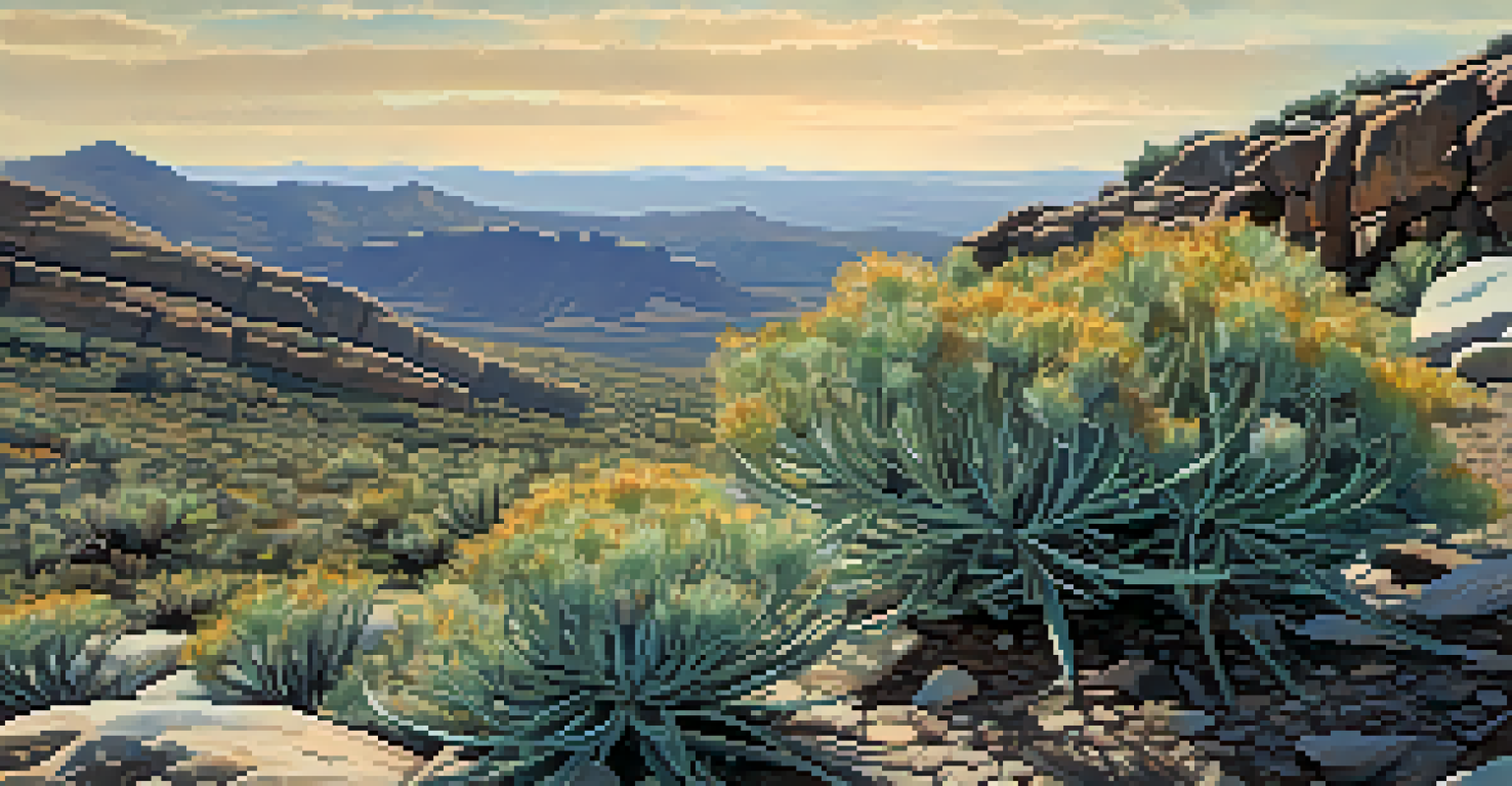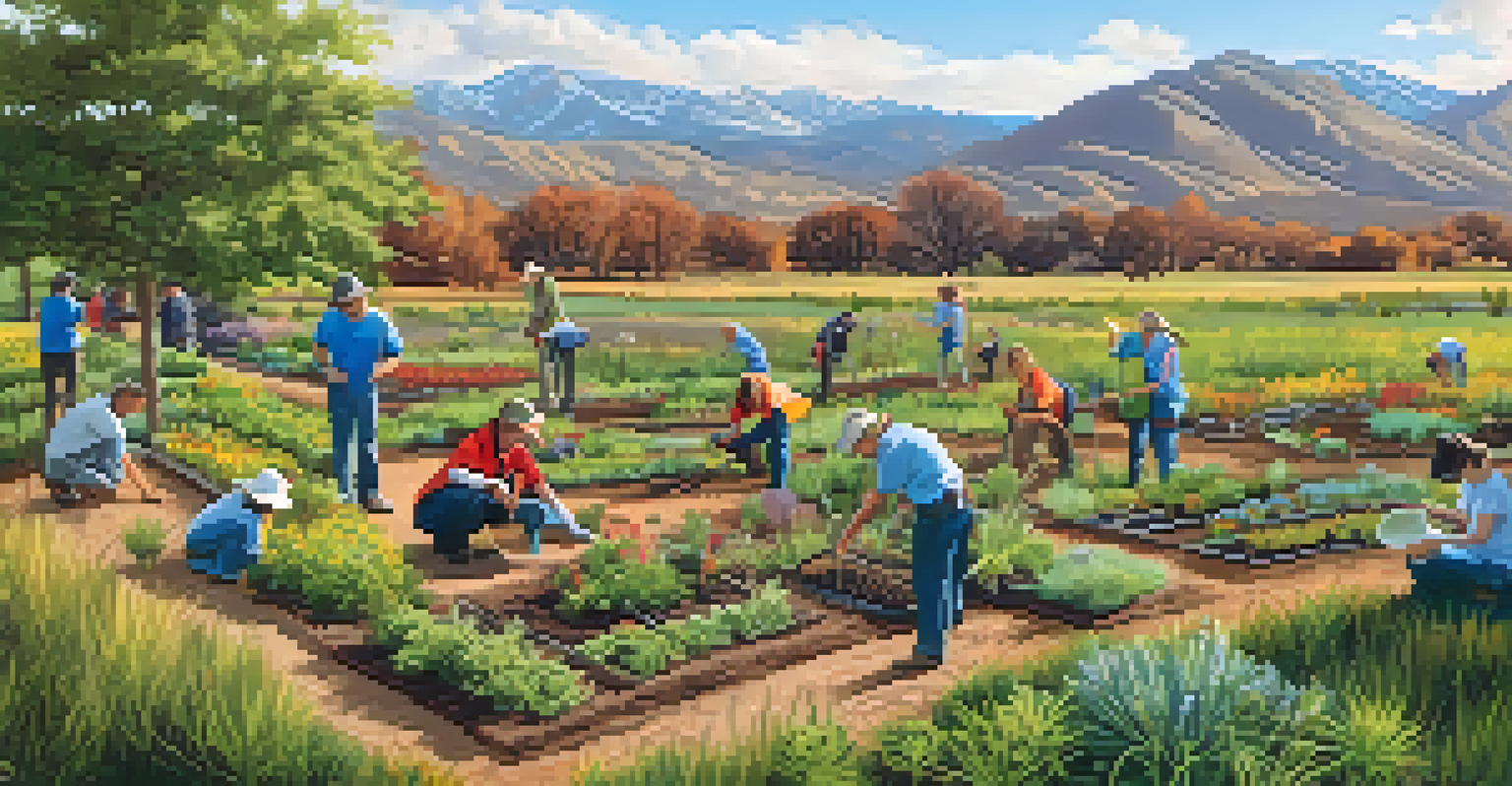Influence of Boulder's Elevation on Local Plant Growth Patterns

Understanding Boulder’s Unique Elevation
Boulder, Colorado, sits at an elevation of approximately 5,430 feet. This unique altitude creates a distinct environment that influences various ecological factors. The combination of elevation, climate, and geography shapes the local ecosystem, particularly plant growth patterns. Understanding this interplay is crucial for both local residents and environmentalists.
Nature does not hurry, yet everything is accomplished.
At higher elevations, the atmosphere becomes thinner, which affects air pressure and temperature. These changes can influence not only how plants grow but also which species thrive in Boulder. For instance, plants that are adapted to high altitudes often exhibit unique traits that allow them to survive in such conditions.
In essence, Boulder’s elevation acts as a natural filter, determining which plant species can flourish. This results in a diverse yet specific set of flora that is uniquely adapted to the local environment.
The Role of Temperature in Plant Growth
Temperature is a key player in plant growth, and Boulder’s elevation contributes to its unique temperature patterns. As altitude increases, temperatures generally decrease, which can limit the growing season for many plants. This can lead to shorter flowering periods and slower growth rates, particularly for more sensitive species.

For example, gardens in Boulder may see that certain vegetables and flowers bloom later than they would at lower elevations. This delayed growth can require gardeners to adjust their planting schedules to maximize their harvest. It also highlights the importance of selecting appropriate plant species that can thrive in these cooler conditions.
Boulder's Unique Elevation Effects
Boulder's high elevation influences its climate, soil composition, and plant growth patterns, creating a distinct ecological environment.
Ultimately, understanding how temperature shifts with elevation can help both gardeners and conservationists make informed decisions about plant choices and care in Boulder.
Soil Composition and Its Impact on Flora
Boulder's elevation influences not just climate but also soil composition, which is critical for plant health. At higher altitudes, soil tends to be less developed and can be rockier, impacting nutrient availability. This can pose challenges for plant growth, as many species rely on rich, loamy soil for sustenance.
The clearest way into the Universe is through a forest wilderness.
Additionally, the type of vegetation present can affect soil quality. For instance, deep-rooted plants can help stabilize soil and improve its structure over time. In contrast, invasive species may deplete soil nutrients, making it harder for native plants to flourish.
Understanding the local soil composition can guide efforts in conservation and landscaping. It allows gardeners and environmentalists to choose the right plants that will thrive in Boulder’s specific soil conditions.
Water Availability and Plant Adaptations
Water availability is another essential factor in plant growth, and Boulder's elevation plays a significant role. At higher elevations, precipitation often falls as snow, which can create a seasonal water deficit during warmer months. This means that plants must be particularly resilient and adapted to survive periods of drought.
Many local plants have developed adaptations, such as deep root systems or waxy leaves, to help them conserve water. For example, drought-resistant species like sagebrush have become predominant in some areas, showcasing how plants adapt to their environment. This resilience is crucial for maintaining biodiversity in the region.
Temperature and Growing Conditions
The cooler temperatures at Boulder’s elevation shorten the growing season, requiring gardeners to select appropriate plant species.
By recognizing how water availability affects plant life, we can better appreciate the intricate balance of Boulder's ecosystem and the adaptations of its native flora.
Influence of Sunlight and UV Radiation
Sunlight is vital for plant growth, but at Boulder's elevation, the intensity of UV radiation is notably higher. This increase in UV exposure can stress certain plant species, affecting their growth and reproductive success. As a result, plants in Boulder often have thicker leaves or protective coatings to shield themselves from harmful radiation.
Moreover, the higher elevation also means longer daylight hours during the growing season, which can benefit certain plants. This extended exposure allows them to photosynthesize more effectively, contributing to robust growth. However, this advantage is often balanced by the stress of increased UV levels.
Understanding the dual nature of sunlight and UV radiation helps us appreciate how Boulder’s plants have adapted to thrive under these unique conditions.
Local Ecosystems and Plant Interactions
Boulder’s elevation contributes to the formation of distinct ecosystems, each with its own community of plants. These ecosystems are characterized by specific plant interactions, such as competition for resources and symbiosis. For example, some plants may rely on mycorrhizal fungi to enhance nutrient uptake, highlighting the interconnectedness of life in the area.
In addition, the diversity of plant species in different ecosystems can affect local wildlife. Birds, insects, and mammals often depend on specific plants for food and shelter, making plant health crucial for overall biodiversity. As a result, understanding these interactions is essential for preserving Boulder's rich natural heritage.
Importance of Conservation Efforts
With threats from climate change and urban development, conservation efforts are crucial to preserving Boulder's native plant species and ecosystems.
By studying local ecosystems and their plant interactions, we can gain insights into the delicate balance of nature and the importance of conservation efforts in Boulder.
Conservation Efforts and Future Considerations
As Boulder's elevation affects local plant growth, conservation efforts become increasingly vital. With climate change and urban development posing significant threats, it’s essential to protect native species and their habitats. Organizations and local governments are working together to implement strategies that promote biodiversity and sustainability.
For instance, efforts to restore native plant communities can help maintain ecological balance and resilience. Engaging the community through education and volunteer programs can also foster a deeper appreciation for local flora, encouraging citizens to take part in conservation initiatives.

Ultimately, by prioritizing conservation efforts, we can ensure that Boulder’s unique plant life continues to thrive, preserving the beauty and biodiversity of our natural environment for future generations.